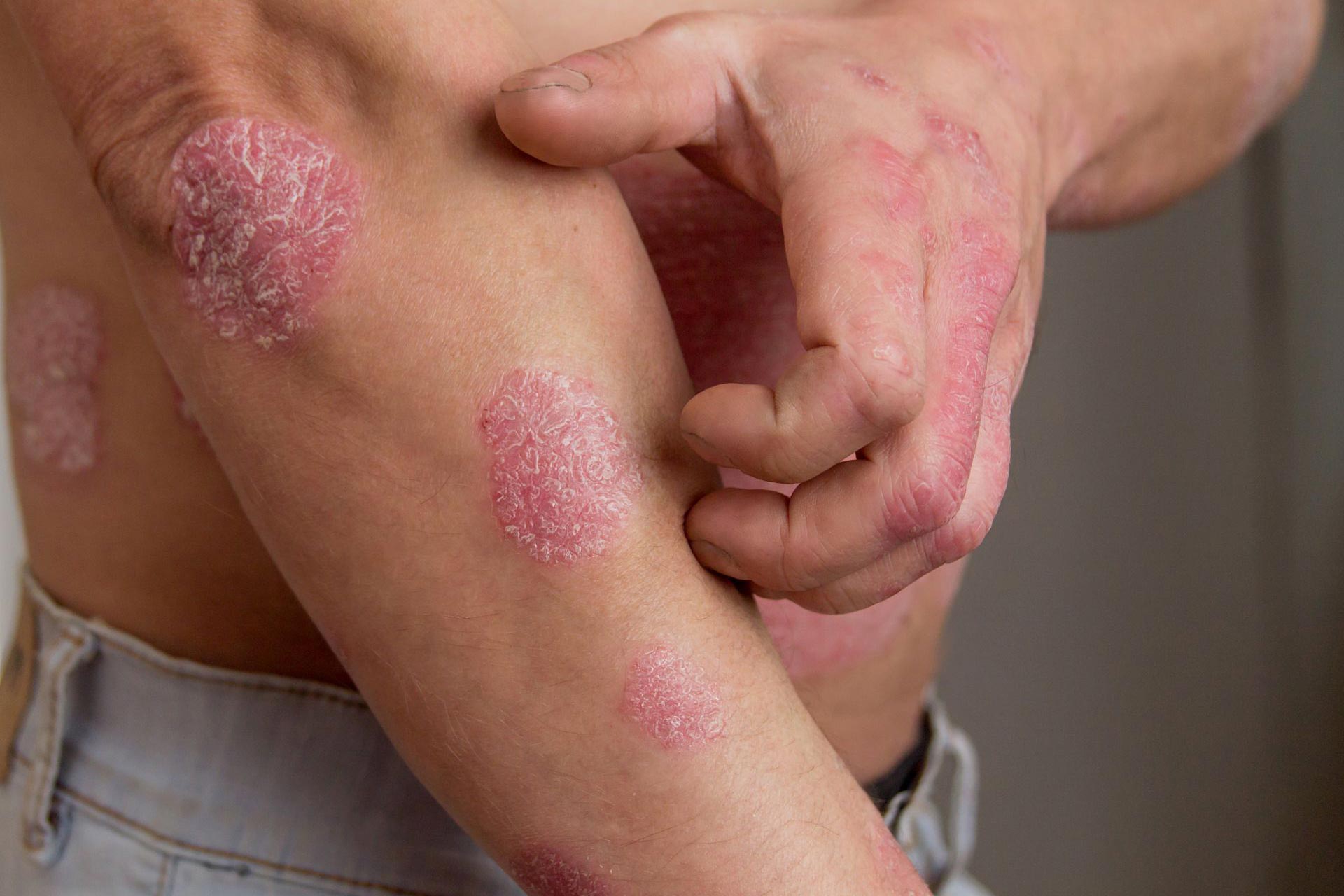Psoriasis is a multifaceted, chronic immunological inflammatory disease that affects the skin. It is estimated that about 100,000 Finns, or approximately 2% of the population, suffer from it. The disease can occur at any age, but psoriasis is less common in children. Skin psoriasis often begins in the 16–22 age range, with another peak in onset occurring in the 55–60 age range.
Some people with skin psoriasis also develop psoriatic arthritis. In individuals under 40 who develop psoriasis, psoriatic arthritis typically appears only several years later. On the other hand, in older people who develop psoriasis, joint symptoms often begin quite soon after the appearance of skin symptoms. Only a small percentage of patients experience joint symptoms before skin symptoms.
Psoriasis occurs on all areas of the skin, and on the nails. The extent of the rash varies from a few small patches to covering the entire skin. Psoriasis may be associated with itching and skin tenderness or any sensation from burning to tingling, especially on the scalp. However, the patches are often only mildly symptomatic. Characteristic of the condition is the alternation between asymptomatic and symptomatic periods.
Factors that may predispose to psoriasis include heavy alcohol consumption, infections (such as dental infections), smoking and stress. Additionally, many medications can trigger or worsen psoriasis.
Manifestations of psoriasis
- Plaque psoriasis
- Guttate psoriasis
- Inverse psoriasis
- Psoriasis of the scalp
- Psoriasis of the face
- Psoriasis of the palms
- Psoriasis of the soles of the feet
- Psoriasis of the nails
- Genital psoriasis
- Pustular generalised psoriasis
- Localised pustular psoriasis (on the palms and soles of the feet)
- Erythrodermic psoriasis
Severe or mild psoriasis?
There are two commonly used measures to assess the severity of skin psoriasis:
- body surface area (BSA), which indicates the percentage of the skin surface affected by the condition
- psoriasis area and severity index (PASI), which assesses the percentage of rash, redness, thickness and scaling separately in different areas.
Another important aspect in determining the severity of this skin condition is how much the individual feels it affects their quality of life. The impact of skin symptoms on quality of life can be measured, for example with the ten-question Dermatology Life Quality Index (DLQI) questionnaire.
Treatment of psoriasis
There is no complete cure for skin psoriasis, and even when well managed, psoriasis is rarely completely symptom-free. However, treatment can alleviate symptoms and significantly improve quality of life.
For most of those affected, skin and joint symptoms are mild and can be sufficiently treated with regular topical medication. With the treatment of more severe psoriasis in particular, the patient’s overall situation must be considered comprehensively. In addition to easing the skin condition, the goal is to alleviate inflammation throughout the body, treat underlying infections and assess and manage risk factors for cardiovascular diseases. Comorbidities and early initiation of treatment are also important to consider.
The treatment of psoriasis is graduated according to the severity:
- Over-the-counter medicines (hydrocortisone, moisturisers)
Regular use of moisturisers on clean skin reduces the dryness of the rash, itching, and the amount of scaling. - Topical prescription medications (corticosteroids, vitamin D ointments, combinations of these)
Topically applied medicated ointments are also important in supplementing other treatments for extensive psoriasis. - Phototherapy
Psoriasis can be treated with ultraviolet (UV) radiation alone (ultraviolet B or UVB phototherapy and selective ultraviolet phototherapy or SUP), or the patient’s skin can be prepared before exposure to ultraviolet A (UVA) rays using internally or externally administered photosensitising agents. Phototherapy reduces inflammation in the skin and slows down skin thickening, making it particularly suitable for the treatment of moderate plaque psoriasis. - Systemic medicines
Systemic medications are used for the treatment of moderate to severe psoriasis when topical medications have not been effective or when a larger part of the body surface is affected by symptoms. These medications are taken orally (as tablets), by injection or as an infusion. Systemic medications affect the entire body and alleviate psoriasis symptoms by suppressing inflammation and excessive cell growth. - Biological medicines
Advanced protein-based and antibody-based medications target specific components of the body’s immune system known to be important in the inflammatory process of psoriasis. These medications may be considered when psoriasis is severe and persistent, and/or when conventional treatments have not produced satisfactory results or are not suitable for the patient.
When choosing treatment options, a dermatologist considers factors such as the severity of the skin condition and joint inflammation, the feasibility of different treatments, and the patient’s previous experiences and response to previous treatments. The doctor informs the patient about available treatments, their effects and practical implementation. The most suitable treatments are then discussed and decided on collaboratively with the patient.

